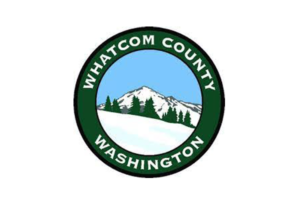The COVID-19 pandemic has made it difficult, if not impossible, to ignore the challenges within our current food system. For those who have spent decades working on the front lines, it is a relief to finally see news headlines bringing to light the deep systemic flaws that exist and acknowledging the reality of so many hardworking individuals moving food from farm to table.
To answer the collective “How did we let this happen?” refrain, we are joining other industry leaders in pulling back the curtain on a system that, at a minimum, has been built with very strategic economically driven policies, laws, and regulations paired with uninformed or, worse, apathetic consumer spending and voting. The issues are highly complex, so let’s focus on the big picture: Our current food system is not resilient, equitable, accessible, or sustainable.
Before COVID-19, the food system was the largest employment sector in the United States, with one in every seven people employed in the country doing a job somewhere between growing our food to dealing with our excessive food waste. While these industries have been driving our economy, those working behind the scenes are often paid low wages (with many living in poverty, making less than $12,760 annually), experience unsafe working conditions, and are not typically provided with paid sick leave or other benefits. This has been harder to ignore during the COVID-19 pandemic, as many of our food system workers are facing one of two extremes–either being laid off due to restaurant closures or deemed “essential” and serving on the front lines of the pandemic. Perhaps now more than ever the public is starting to realize how truly essential it is to have people working around the clock to grow, harvest, slaughter, process, distribute, stock, and prepare food for grocery stores, school meal programs, institutions, and more.
The current food supply chain is complex, globalized, and price driven, and it has evolved to the point in which grocery stores are continually restocking with approximately three days of essential items at any given time. This is no easy feat and is truly a testament to everyone from the truckers hauling 24/7 to the logistics specialists keeping the products flowing across oceans. Unfortunately, the elements of the food system that enable society to enjoy the convenience of purchasing diverse products from around the world at low prices also make the system vulnerable to crisis. That is the danger of buying into the illusion that we can enjoy abundance and perfection of any product that is cheap, convenient, and on-demand without consequences. The average person has lost touch with the seasonality of our food system and the effects this model has on local economies, farmers, workers, and the environment. The meat industry alone is serving as a cautionary tale of only having a handful of companies–driven solely by price–processing and distributing the majority of the product. In the end, it is the workers (predominantly Latino and African American), the contract farmers, and the animals that suffer, and currently there isn’t even meat to show for it.
In addition to facing disproportionately higher risks in the workplace, communities of color (especially those in the South) are facing systemic and institutional racism, resulting in people’s environments differing based on race and ethnicity. This causes things like the cost and availability of healthy foods to be much more of a barrier in communities predominantly of color, leading to people of color being disproportionately impacted by diet-related chronic diseases, such as diabetes and heart disease. Paired with high risk “essential” jobs and barriers to healthcare access, these underlying conditions are a contributing factor to people of color getting and dying from COVID-19 at higher rates compared to people who are white.
Not only that, but the food insecurity crisis is only getting worse. According to Feeding America, before COVID-19, food insecurity was at its lowest since the Great Recession of 2008, and yet more than 37 million people were food insecure. Because of COVID-19, it is projected that 54 million people, including 18 million children, will experience food insecurity. Both pre-pandemic and in 2020, counties with the highest rates of food insecurity are over-represented by counties with a majority African American population. (Curious about the impact in your area? Click here.)
As states continue to navigate the reopening of schools and public offices and society decides what our “new normal” will be, it is imperative that we do not forget about our food system, those working it in, and those that lack access as a result of gross inequities. We need to make sure that we use COVID-19 as an opportunity to work to change these realities instead of continuing to ignore them. We must do what is needed now to build a resilient food system–one that is able to withstand and recover from disruptions in a way that ensures a sufficient supply of accessible and acceptable food for all–for the future, whether that be our next pandemic, flood, hurricane, or tornado.
Every American has the opportunity to play a role in shaping the future of our food system and needs to hold businesses, government agencies, and elected officials accountable for their role in ensuring that the health of our country and its citizens come first. This means bringing together communities to build regional food economies, investing in supply chains that help our local farmers sell to local consumers, holding businesses accountable for providing living wages and safe working conditions, supporting policies and programs to increase food access and affordability, and empowering individuals to grow and cook their own food. In the face of COVID-19, these alternative systems have already demonstrated their resilience in a time of crisis as they pivot to meet an increased consumer demand, ensure families are fed regardless of income, and collaborate to avoid food waste. It is time we focus on supporting local food policy councils and coalitions that can create place-based solutions to maximize each area’s specific strengths to address their unique challenges.
Working from the grassroots up, we must then advocate for the needs of our communities and engage our leadership in taking an active role. Regardless of approach, we fervently hope that each person in our country will continue to treat our food system and all those working in it as essential even after the crisis has passed.
—
This article was written in collaboration with Carrie Draper, MSW, is a senior research associate in the University of South Carolina Arnold School of Public Health’s Department of Health Promotion, Education, and Behavior.
Photo is from John Hopkins School of Public Health.



